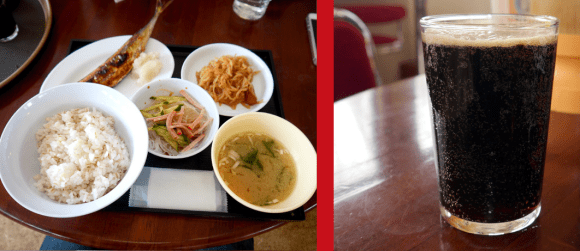
Hokkaido, Japan’s rural, northernmost island, has a wealth of tourist attractions. But while most travelers spend their time enjoying the natural beauty of the region’s mountains, forests, and oceans, visitors to the city of Abashiri often spend their time in a very different way.
That’s because in contrast to the sense of freedom Hokkaido’s wide-open vistas are so evocative of, Abashiri is home to the Abashiri Prison Museum. Aside from exhibits on the history of incarceration, the museum also has a cafeteria, where diners can eat a recreation of modern Japanese prison food, and even knock back a bottle of Abashiri Prison Stout beer.
Abashiri’s permanent population has been supplemented by convicts since the Meiji Era of the late 1800s. Even today, criminals are housed in Abashiri, although they’re placed in a more modern correctional facility than the town’s original one.
With no more need to keep prisoners in the old jail, the building has been converted into the Abashiri Prison Museum, and travelers with time to spare can see more than a dozen preserved and recreated aspects of the prison. Even if you’re in a rush, though, you can get a literal taste of life on the inside at the adjacent Prison Cafeteria.
▼ Thankfully, seating is at tables, not in cells.
While the restaurant has inexpensive standards such as ramen, beef bowls, soba, and udon, what most people come for are the Prison Food Set Meals, recreations of the meals served to the actual prisoners currently being held at Abashiri’s prison. On the day we stopped by, this meant a choice between two types of fish: samma (saury) or hokke (a type of mackerel).
We opted for the saury, which also came with sliced daikon radish, harusame salad, miso soup, and a 70/30 mix of white rice and barley. In stark contrast to a typical Japanese restaurant meal, where the foods and plates are arranged to be as aesthetically pleasing as possible, the no-frills presentation wasn’t doing much to visually stimulate our appetite.
Surprisingly enough, though, it tasted pretty good. As a matter of fact, you could do a lot worse than this, flavor-wise, at some cheap restaurants. As long as you’re OK with a very simple, austere collection of flavors, you might even be comfortable eating this regularly, provided you could find a way to do so without actually being locked up.
▼ If your taste buds need more stimulation, though, the cafeteria also has non-prison-spec curry.
It’s not just the food that’s prison-themed, either. If you’re feeling thirsty, you can also order a bottle of cold Abashiri Prison Stout, or Kangoku no Kuro (Prison Black) as it’s called in Japanese.
Despite the name, Abashiri Prison Stout isn’t made by convicts as part of a work release program, nor is it bottled pruno made by prisoners who hide bags of fermenting fruit under their beds. In addition to its prison and museum, Abashiri also has its own microbrewery, Abashiri Beer. The company offers a number of products, such as Ice Flow Draft and Abashiri Premium, and Prison stout is simply the most startlingly named.
The beer itself is pitch black. Light has as much chance of escaping the beer’s confines as prisoners do of breaking out of Abashiri Prison. The flavor, meanwhile, is what you’d expect from the color: full-bodied and captivating.
In addition to the Prison Museum’s Cafeteria, Abashiri Prison Stout can be purchased in souvenir shops in the city as well as online here directly from the brewer. Just make sure you’ve got a designated driver if you’re planning on knocking back a few and also are keen to stay out of jail yourself, since drunk driving is, of course, a crime.
Related: Abashiri Prison Museum website
Photos: RocketNews24
[ Read in Japanese ]

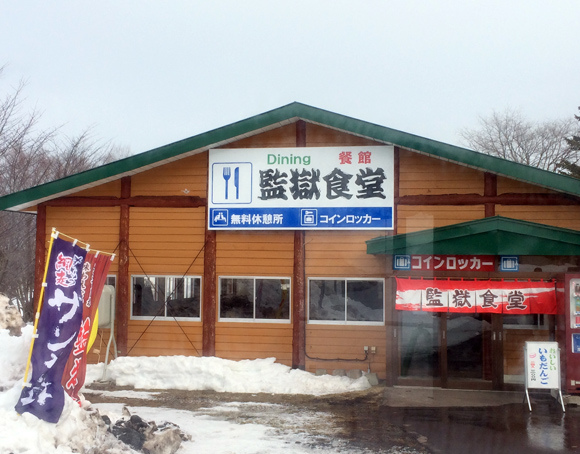
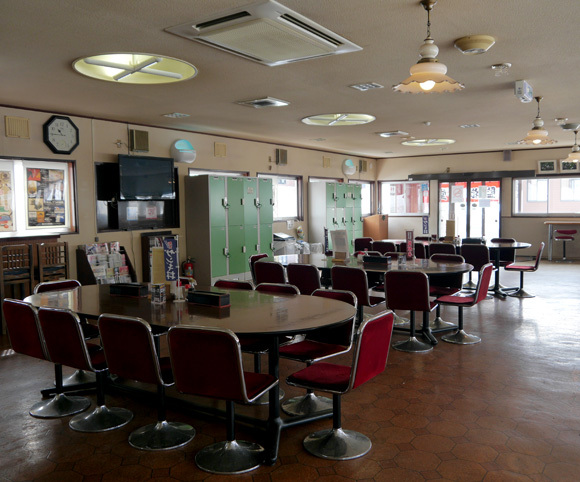
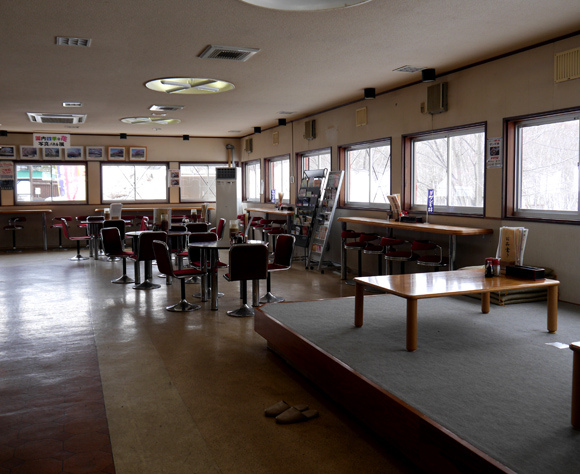
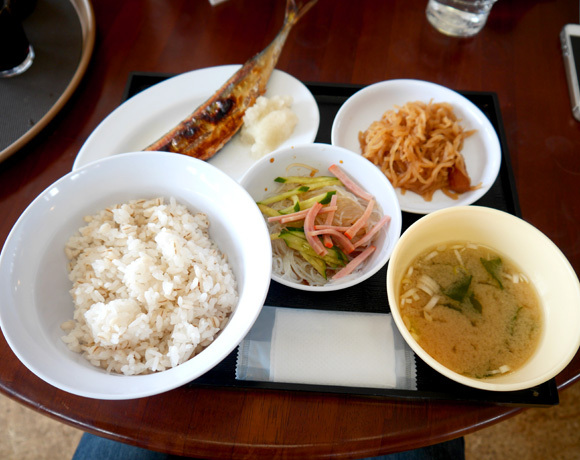
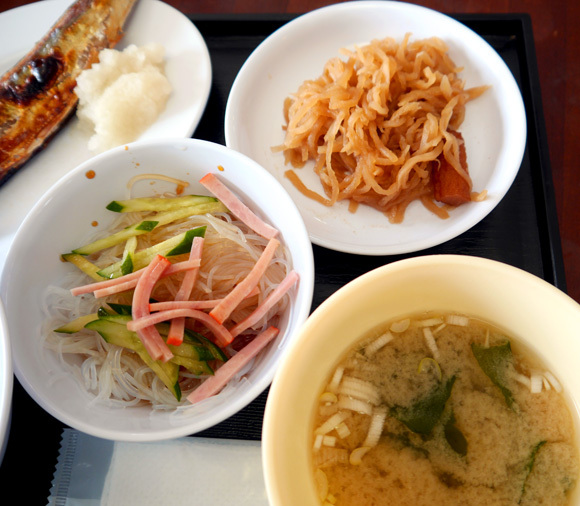
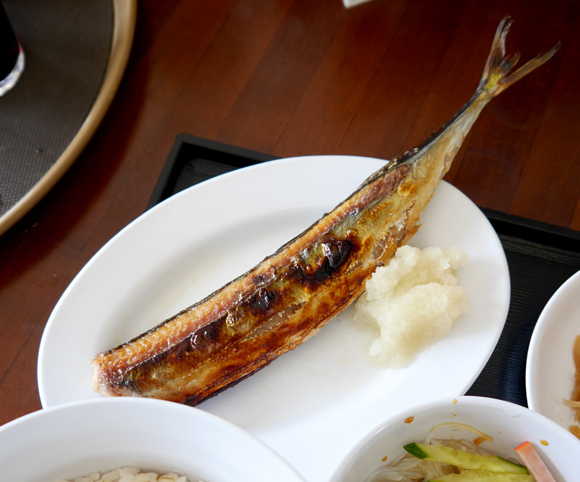
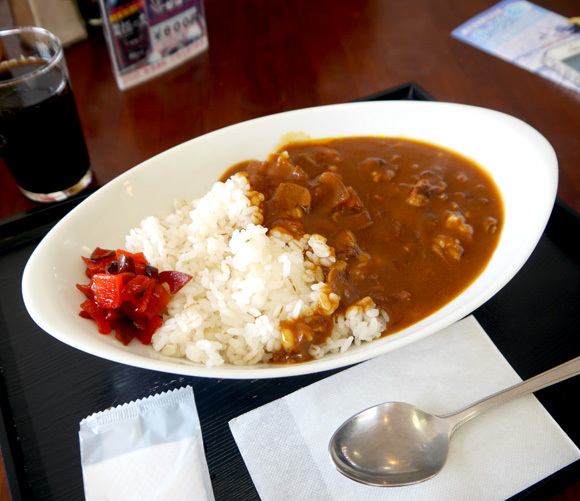
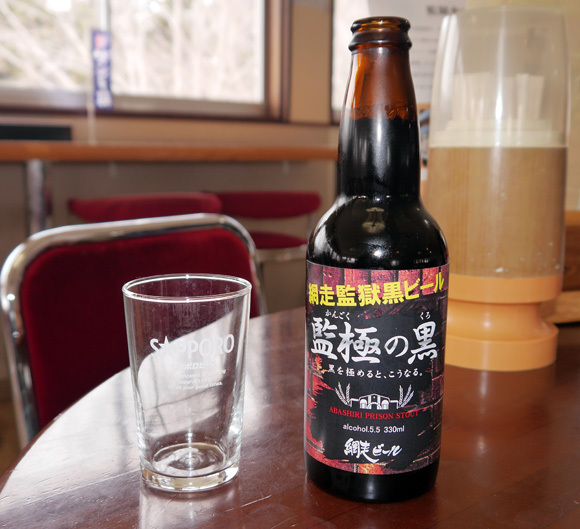
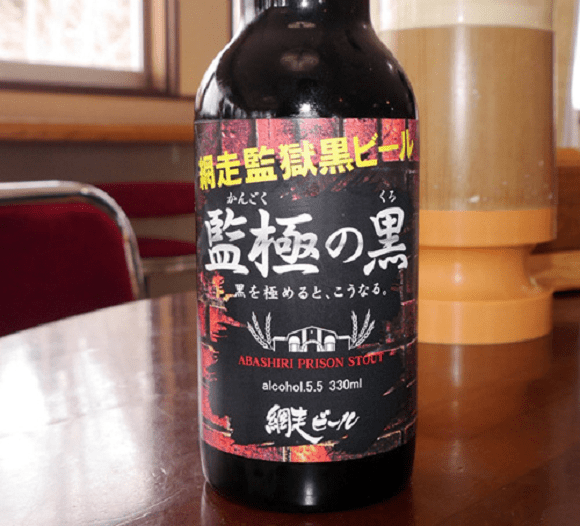

 Eat Japanese prison food at this unique cafeteria in Abashiri
Eat Japanese prison food at this unique cafeteria in Abashiri Ever wondered what Japanese prison food tastes like? Try it firsthand at the “Prison Cafeteria”
Ever wondered what Japanese prison food tastes like? Try it firsthand at the “Prison Cafeteria” Japan has a special beer brewed to go great with dried ramen noodle snacking
Japan has a special beer brewed to go great with dried ramen noodle snacking Can Japan’s favorite cheap chocolate also be a good craft beer? Taste-testing Black Thunder Stout
Can Japan’s favorite cheap chocolate also be a good craft beer? Taste-testing Black Thunder Stout Tokyo’s green tea beer garden gives you all-you-can-drink matcha and hojicha beer this summer
Tokyo’s green tea beer garden gives you all-you-can-drink matcha and hojicha beer this summer Japanese beef bowl chain Sukiya’s 2026 Smile Box lucky bag basically pays for itself
Japanese beef bowl chain Sukiya’s 2026 Smile Box lucky bag basically pays for itself New Japanese menstrual product seeks to help women spot unidentified iron deficiencies
New Japanese menstrual product seeks to help women spot unidentified iron deficiencies Play games, learn, and get your fortune at Ginza’s limited-time Tsunaguu “Shrine of the Future”
Play games, learn, and get your fortune at Ginza’s limited-time Tsunaguu “Shrine of the Future” Starbucks Japan ready to get Year of the Horse started with adorable drinkware and plushies【Pics】
Starbucks Japan ready to get Year of the Horse started with adorable drinkware and plushies【Pics】 7-Eleven Japan has a hack for creating insanely delicious potato chip rice meals
7-Eleven Japan has a hack for creating insanely delicious potato chip rice meals Busty Japanese brushstroke calligraphy artist shares visual appeal in video series【Videos】
Busty Japanese brushstroke calligraphy artist shares visual appeal in video series【Videos】 Pizza Hut Japan’s hot lucky bags are perfect for a New Year’s pizza party
Pizza Hut Japan’s hot lucky bags are perfect for a New Year’s pizza party 8 sakura sweets to enjoy under the cherry blossoms at your next hanami picnic in Japan
8 sakura sweets to enjoy under the cherry blossoms at your next hanami picnic in Japan Is real Tokyo as dangerous as the Yakuza video games? Chapter 3: Crazy Town
Is real Tokyo as dangerous as the Yakuza video games? Chapter 3: Crazy Town Get ready for a cherry-blossom-flavored spring with Sakura Butter potato chips from Calbee!
Get ready for a cherry-blossom-flavored spring with Sakura Butter potato chips from Calbee! 7 great places to see Mt. Fuji from without having to climb it
7 great places to see Mt. Fuji from without having to climb it Cyberpunk anime meets traditional culture in Ghost in the Shell gold leaf Japanese changing screens
Cyberpunk anime meets traditional culture in Ghost in the Shell gold leaf Japanese changing screens Hayao Miyazaki says Happy New Year to Studio Ghibli fans with new art for Year of the Horse
Hayao Miyazaki says Happy New Year to Studio Ghibli fans with new art for Year of the Horse Hello Kitty Choco Egg figures are an adorable trip through three periods of Japanese pop culture【Pics】
Hello Kitty Choco Egg figures are an adorable trip through three periods of Japanese pop culture【Pics】 We found possibly the quietest Japanese-style hotel in Tokyo’s bustling Shinjuku district
We found possibly the quietest Japanese-style hotel in Tokyo’s bustling Shinjuku district 7-Eleven Japan’s ramen-cooking robot whipped us up a bowl of noodles【Taste test】
7-Eleven Japan’s ramen-cooking robot whipped us up a bowl of noodles【Taste test】 Sumo Sanrio! Hello Kitty and pals team up with Japan Sumo Association for new merch【Pics】
Sumo Sanrio! Hello Kitty and pals team up with Japan Sumo Association for new merch【Pics】 Japan’s oldest largetooth sawfish in captivity back on display in Mie Prefecture
Japan’s oldest largetooth sawfish in captivity back on display in Mie Prefecture More Than a Capsule Stay: Why Solo Travelers Choose “global cabin Yokohama Chinatown”
More Than a Capsule Stay: Why Solo Travelers Choose “global cabin Yokohama Chinatown” 7-Eleven Japan starts new temporary luggage storage service in over 300 branches
7-Eleven Japan starts new temporary luggage storage service in over 300 branches Disillusionment at Tsukiji’s tourist-target prices led us to a great ramen restaurant in Tokyo
Disillusionment at Tsukiji’s tourist-target prices led us to a great ramen restaurant in Tokyo Starbucks teams up with 166-year-old Kyoto doll maker for Year of the Horse decorations【Photos】
Starbucks teams up with 166-year-old Kyoto doll maker for Year of the Horse decorations【Photos】 Tokyo considering law requiring more trash cans following litter increase in heavily touristed area
Tokyo considering law requiring more trash cans following litter increase in heavily touristed area Tokyo’s Tsukiji sushi neighborhood asks tour groups to stay away for the rest of the month
Tokyo’s Tsukiji sushi neighborhood asks tour groups to stay away for the rest of the month Tokyo event lets you travel back in time, for free, to celebrate 100 years since Showa era start
Tokyo event lets you travel back in time, for free, to celebrate 100 years since Showa era start Sanrio theme park in Japan announces plans to expand into a Sanrio resort
Sanrio theme park in Japan announces plans to expand into a Sanrio resort Japan may add Japanese language proficiency, lifestyle classes to permanent foreign resident requirements
Japan may add Japanese language proficiency, lifestyle classes to permanent foreign resident requirements Stamina-destroying “Paralysis Noodles” are Tokyo’s newest over-the-top ramen innovation
Stamina-destroying “Paralysis Noodles” are Tokyo’s newest over-the-top ramen innovation Survey asks foreign tourists what bothered them in Japan, more than half gave same answer
Survey asks foreign tourists what bothered them in Japan, more than half gave same answer Japan’s human washing machines will go on sale to general public, demos to be held in Tokyo
Japan’s human washing machines will go on sale to general public, demos to be held in Tokyo Japan’s deadliest food claims more victims, but why do people keep eating it for New Year’s?
Japan’s deadliest food claims more victims, but why do people keep eating it for New Year’s? We deeply regret going into this tunnel on our walk in the mountains of Japan
We deeply regret going into this tunnel on our walk in the mountains of Japan Studio Ghibli releases Kodama forest spirits from Princess Mononoke to light up your home
Studio Ghibli releases Kodama forest spirits from Princess Mononoke to light up your home Major Japanese hotel chain says reservations via overseas booking sites may not be valid
Major Japanese hotel chain says reservations via overseas booking sites may not be valid Put sesame oil in your coffee? Japanese maker says it’s the best way to start your day【Taste test】
Put sesame oil in your coffee? Japanese maker says it’s the best way to start your day【Taste test】 No more using real katana for tourism activities, Japan’s National Police Agency says
No more using real katana for tourism activities, Japan’s National Police Agency says Starbucks Japan reveals new sakura drinkware collection, inspired by evening cherry blossoms
Starbucks Japan reveals new sakura drinkware collection, inspired by evening cherry blossoms Updated cherry blossom forecast shows extra-long sakura season for Japan this year
Updated cherry blossom forecast shows extra-long sakura season for Japan this year Clear near beer is here! We taste test Japan’s new zero-alcohol, zero-color brew【Taste test】
Clear near beer is here! We taste test Japan’s new zero-alcohol, zero-color brew【Taste test】 Mint chocolate beer sounds great, but how does it taste? We find out
Mint chocolate beer sounds great, but how does it taste? We find out This Blue Beer Looks Like it Came from Alcoholic Willy Wonka’s Factory
This Blue Beer Looks Like it Came from Alcoholic Willy Wonka’s Factory Cherry blossom beer. Taste test. Need we say more?
Cherry blossom beer. Taste test. Need we say more? Japan’s matcha green tea beer satisfies two cravings in an awesomely delicious way
Japan’s matcha green tea beer satisfies two cravings in an awesomely delicious way Runny curry, no pudding spoons among complaints of Japanese prison inmates
Runny curry, no pudding spoons among complaints of Japanese prison inmates Our Japanese reporter visits Czechia’s famous beer spas and boozily bathes in a bath of beer
Our Japanese reporter visits Czechia’s famous beer spas and boozily bathes in a bath of beer We try Japan’s most exclusive beer at the U.S. Navy base in Yokosuka【Taste test】
We try Japan’s most exclusive beer at the U.S. Navy base in Yokosuka【Taste test】 Japan is getting a new for-beer KitKat variety, and beer inspired by KitKats to drink with it
Japan is getting a new for-beer KitKat variety, and beer inspired by KitKats to drink with it Burgers and beer! Japan’s most popular domestic burger chain sells beer, wine at select locations
Burgers and beer! Japan’s most popular domestic burger chain sells beer, wine at select locations Can you tell the difference between real beer and Japan’s happoshu quasi-beer?【Taste test】
Can you tell the difference between real beer and Japan’s happoshu quasi-beer?【Taste test】 Japan’s best-selling beer is changing its recipe for the first time in 35 years
Japan’s best-selling beer is changing its recipe for the first time in 35 years Kimono to keep, dressing service, unlimited beer, one of Japan’s best views all in one package
Kimono to keep, dressing service, unlimited beer, one of Japan’s best views all in one package Sweet mochi beer? Yamanashi sweets maker teams up with craft brewer for Kuromitsu Black
Sweet mochi beer? Yamanashi sweets maker teams up with craft brewer for Kuromitsu Black Work meeting isn’t going anywhere? Suntory suggests cracking open a (non-alcoholic) beer
Work meeting isn’t going anywhere? Suntory suggests cracking open a (non-alcoholic) beer
Leave a Reply